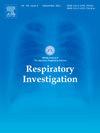Mechanisms of resistance to antibody–drug conjugates in cancers
IF 2
Q2 RESPIRATORY SYSTEM
引用次数: 0
Abstract
Cancer treatment has evolved dramatically in recent years with the advent of various modalities, including molecular-targeted drugs, monoclonal antibodies, immune checkpoint inhibitors, bispecific antibodies, and chimeric antigen receptor T-cell therapy. Antibody–drug conjugates (ADCs) represent an important breakthrough in cancer treatment, and some ADCs have been approved for use in several types of cancers. Typical ADCs include trastuzumab emtansine for HER2-positive breast cancer, sacituzumab govitecan for triple-negative breast cancer (TNBC), and trastuzumab deruxtecan (T-DXd) for HER2-positive breast cancer, gastric cancer, and HER2 mutation-positive non-small cell lung cancer. Although they have shown therapeutic efficacy, almost all patients develop resistance via multiple mechanisms. In this article, we discuss the major mechanisms of resistance to ADCs, classifying them into five categories: mechanisms related to ‘target antigen,’ ‘decreased internalization,’ ‘lysosomal dysfunction,’ and ‘payload sensitivity’ and other resistance mechanisms [Figure 1]. We also discuss the strategies for overcoming ADC resistance.
癌症对抗体-药物结合物的耐药性机制
近年来,随着分子靶向药物、单克隆抗体、免疫检查点抑制剂、双特异性抗体和嵌合抗原受体t细胞治疗等多种治疗方式的出现,癌症治疗发生了巨大的变化。抗体-药物偶联物(adc)是癌症治疗的一个重要突破,一些adc已被批准用于几种类型的癌症。典型adc包括用于HER2阳性乳腺癌的曲妥珠单抗emtansine,用于三阴性乳腺癌(TNBC)的曲妥珠单抗govitecan,以及用于HER2阳性乳腺癌、胃癌和HER2突变阳性非小细胞肺癌的曲妥珠单抗deruxtecan (T-DXd)。尽管它们已显示出治疗效果,但几乎所有患者都通过多种机制产生耐药性。在本文中,我们讨论了adc耐药的主要机制,将其分为五类:与“靶抗原”、“内化减少”、“溶酶体功能障碍”、“有效载荷敏感性”和其他耐药机制相关的机制[图1]。我们还讨论了克服ADC抗性的策略。
本文章由计算机程序翻译,如有差异,请以英文原文为准。
求助全文
约1分钟内获得全文
求助全文

 求助内容:
求助内容: 应助结果提醒方式:
应助结果提醒方式:


